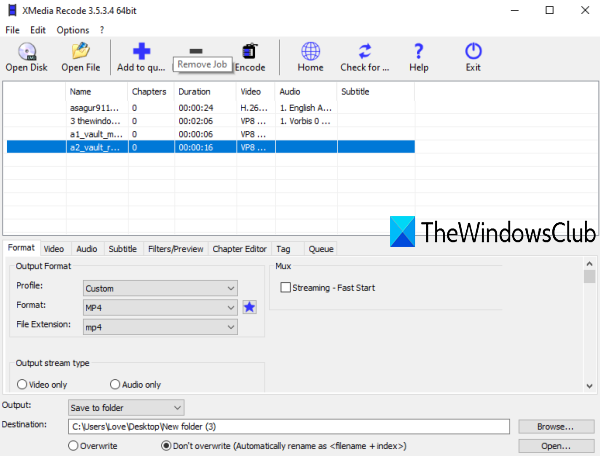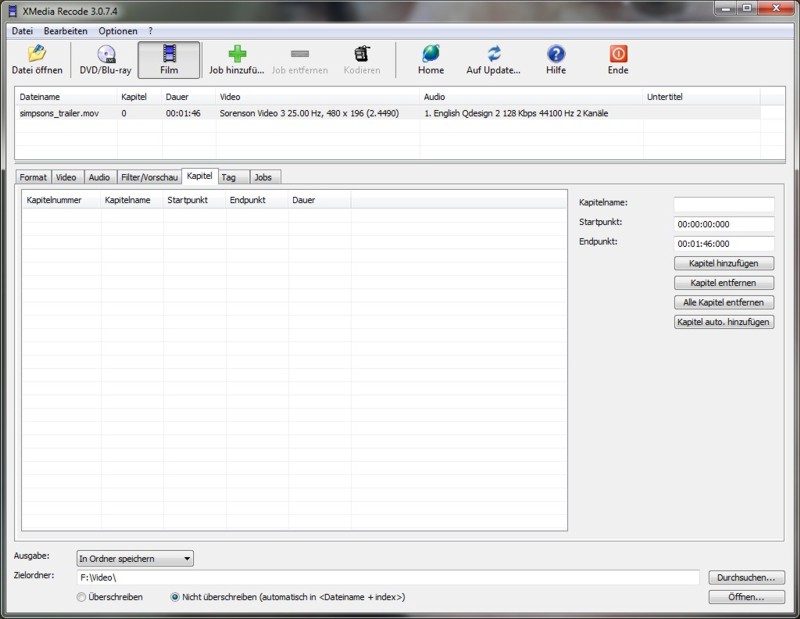
Adapt as necessary to your encoding requirements.įor the hardware-accelerated infrastructure available to current-generation NVIDIA hardware with FFmpeg, see this answer. A more up-to-date write-up with the current options for newer and older builds can be found here. Refer to this answer for the hardware limitations you'll run into with NVENC, especially for HEVC encodes on Pascal. Understand the hardware's limitations, and stick to sane defaults first before applying options: set to 1 to enable Temporal AQ (default false)Ģ. set to 1 to enable Spatial AQ (default false) Set the encoding tier (from 0 to 1) (default main) Set the encoding level restriction (from 0 to 186) (default auto) Set the encoding profile (from 0 to 4) (default main) For the HEVC/H.265 encoder: ffmpeg -hide_banner -h encoder=hevc_nvenc | xclip -sel clip Coder type (from -1 to 2) (default default) Set 1 to enable weighted prediction (from 0 to 1) (default 0) Constant quantization parameter rate control method (from -1 to 51) (default -1) Initial QP value for I frame (from -1 to 51) (default -1) Initial QP value for B frame (from -1 to 51) (default -1) Initial QP value for P frame (from -1 to 51) (default -1) Bluray compatibility workarounds (default false) Use access unit delimiters (default false) Set target quality level (0 to 51, 0 means automatic) for constant quality mode in VBR rate control (from 0 to 51) (default 0) AQ strength scale is from 1 (low) - 15 (aggressive) (from 1 to 15) (default 8) When Spatial AQ is enabled, this field is used to specify AQ strength.
Set 1 to minimize GOP-to-GOP rate fluctuations (default false) Set this to 1 to enable automatic insertion of non-reference P-frames (default false) Set 1 to indicate zero latency operation (no reordering delay) (default false) set to 1 to enable Temporal AQ (default false) When lookahead is enabled, set this to 0 to disable adaptive B-frame decision (default true) If forcing keyframes, force them as IDR frames. When lookahead is enabled, set this to 1 to disable adaptive I-frame insertion at scene cuts (default false) Delay frame output by the given amount of frames (from 0 to INT_MAX) (default INT_MAX) (from -2 to INT_MAX) (default any)Īny E.V. Number of concurrent surfaces (from 0 to 64) (default 0) Number of frames to look ahead for rate-control (from 0 to INT_MAX) (default 0) Constant bitrate low delay high quality modeĬbr_hq E.V. Multi-pass variable bitrate mode (deprecated)Ĭbr_ld_hq E.V. Multi-pass optimized for constant frame size (deprecated) Multi-pass optimized for image quality (deprecated) Variable bitrate mode with MinQP (deprecated) Override the preset rate-control (from -1 to INT_MAX) (default -1)

Set the encoding level restriction (from 0 to 51) (default auto) Set the encoding profile (from 0 to 3) (default main) Set the encoding preset (from 0 to 11) (default medium)

Supported pixel formats: yuv420p nv12 p010le yuv444p yuv444p16le bgr0 rgb0 cuda For the H.264 encoder: ffmpeg -hide_banner -h encoder=h264_nvenc | xclip -sel clip Start by understanding the encoder's options.įor NVENC-based encoders, start with learning the options each encoder takes (Note that I'm on Linux, which is why I'm using xclip to copy the codec options to the clipboard prior to pasting them here): We'll start from the basics, as it would be detrimental to jump into the conclusion that a quick barrage of options will suddenly improve expected output without understanding the desired objectives and expectations:ġ. Here is a rough guide to tuning the encoder:


 0 kommentar(er)
0 kommentar(er)
